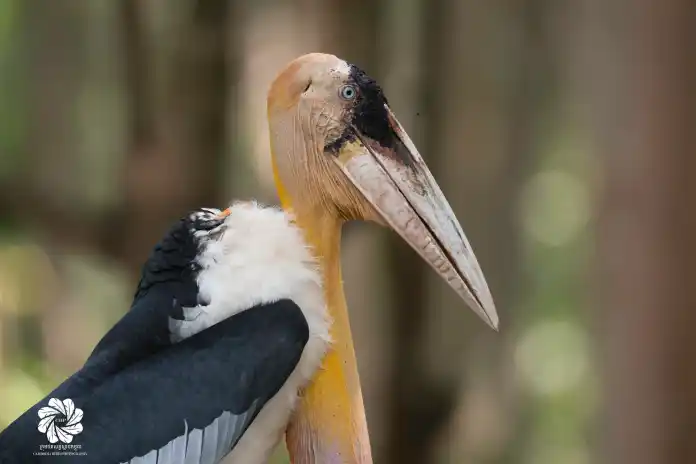Having the most breeding population in Cambodia, the greater adjutant (សត្វត្រដក់ធំ) is a member of the stork family with a large size. These large birds used to be so common across Southern Asia and mainland Southeast Asia, but they are endangered now. Not many Cambodian people know that the population of these great storks are doing great in the country. Let’s dive deeper to know a bit more about greater adjutants below.
Appearance
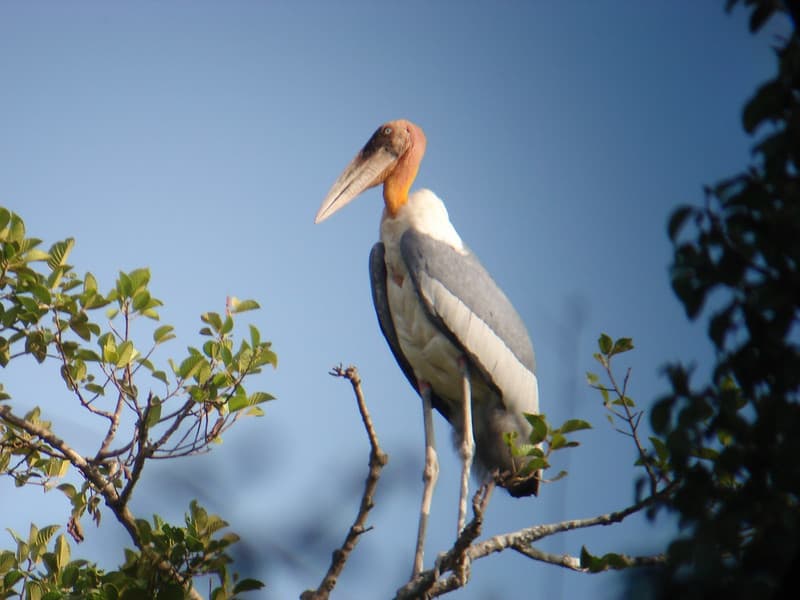
The greater adjutant is a huge bird, growing at a height of between 145 – 150 meters tall. These large distinctive birds have a massive wedge-shaped bill, a bare head, and a distinctive neck pouch. The bill is pale gray with a darker base, and can be as long as 32.2 centimeters. The neck pouch of a greater adjutant does not have a known function, but it is clearly not for food storage.
Another interesting thing about greater adjutants is that their coloration is almost similar to a vulture. A great adjutant has a white collar ruff at the base of its bare yellow to the red-skinned neck. However, the neck and pouch will become bright orange in the breeding season.
Behavior
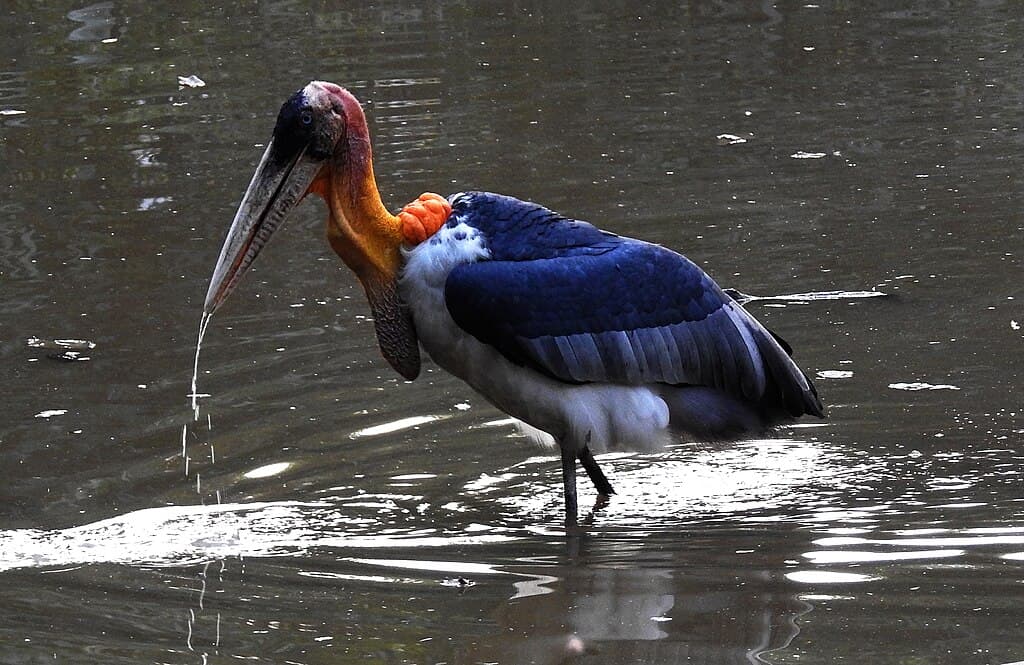
Greater adjutants usually travel in small groups, stalking drying lake beds, garbage dumps, or shallow lakes. All stork species lack intrinsic muscles in the syrinx, and things are the same with the great adjutants. Simply put, they produce sound by raising their bills high and clattering them, known as bill-clattering. They also make low grunting, mooing, or roaring sounds when they are nesting.
Feeding & Habitats
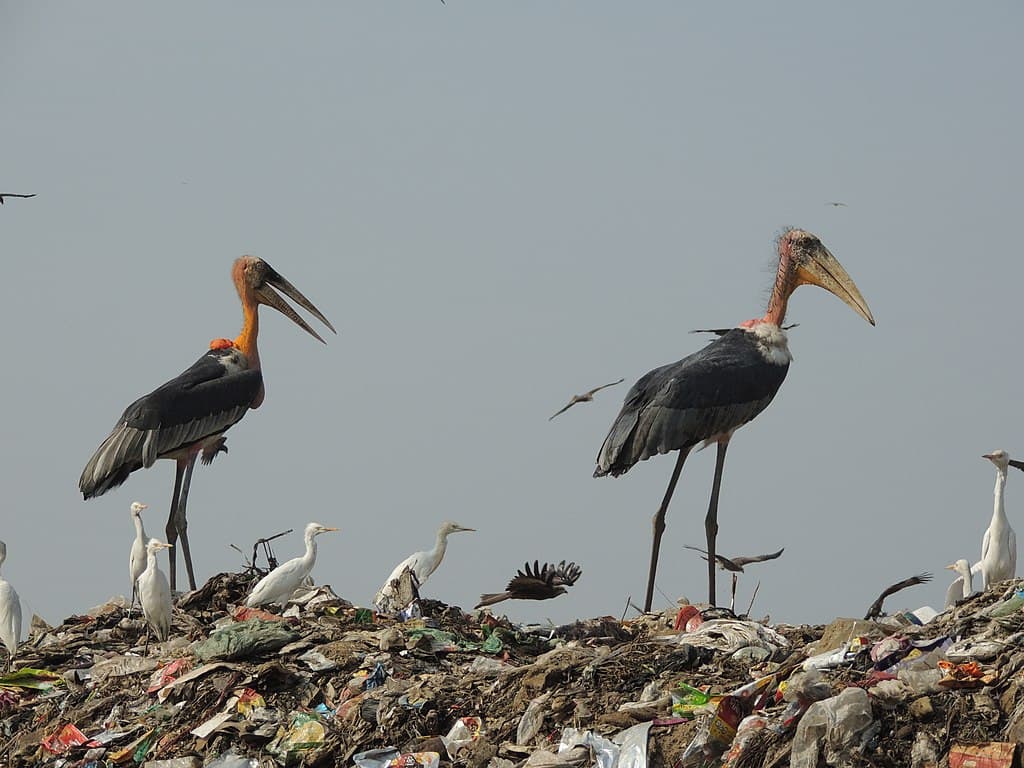
Greater adjutants are mainly scavengers, so their main diet is carrion and offals just like their African cousin marabou stork. More than that, they also scavenge human waste, garbage dump, and carcass dumps on some occasions when food is scarce. This is why it is also common to see greater adjutants soars in thermals along with vultures to scavenge.
These large birds are also omnivorous, so they mostly feed on frogs and large insects that can find. Along with that, these large birds also prey on birds, reptiles, and rodents that are unlucky enough to cross their path. They are also opportunistic so they sometimes prey on vertebrates if they come across one.
Because of their diet, these large birds typically use tropical wetlands to feed on small aquatic and terrestrial wildlife. The main habitats of greater adjutants are freshwater-flooded forests, lakes, marshes, and paddy fields.
Threats & Status
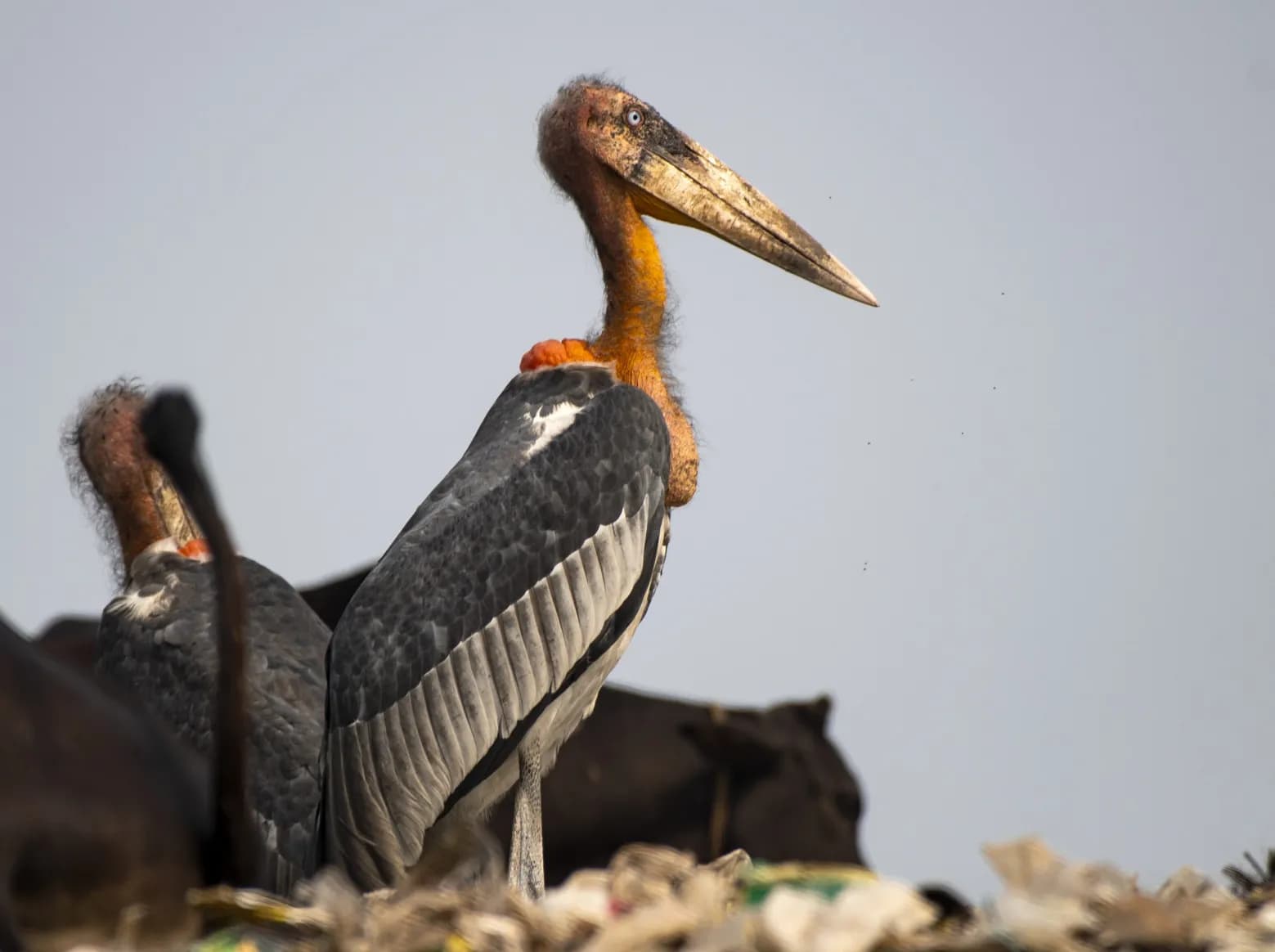
Their population used to be abundant, but there was a massive decline in the first half of the 20th century. Some of the main causes are egg collection, habitat destruction, hunting, over-exploitation of wetlands, and pollution. Great Adjutant is listed as Endangered on the Red List of IUCN, found only in Bangladesh, Burma, Cambodia, Nepal, Thailand, and Vietnam. In Cambodia, their population congregates in the Tonle Sap Biosphere Reserve as well as in the northern plains.
Currently, greater adjutants only breed in India and Cambodia. Cambodia takes the protection of the nesting sites of these birds very seriously, to ensure that there are no egg and chick collections. On top of that, there is also an enforcement of waterbird conservation legislation to protect this species as well.
